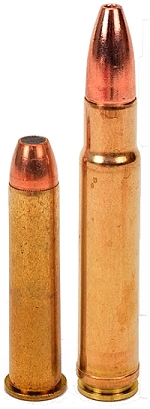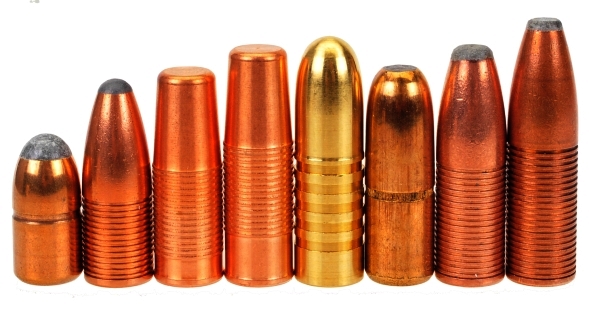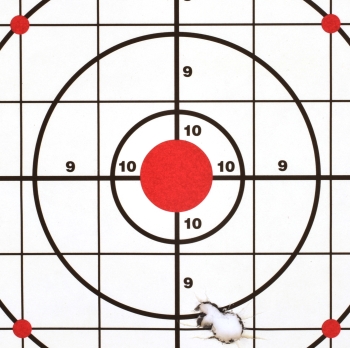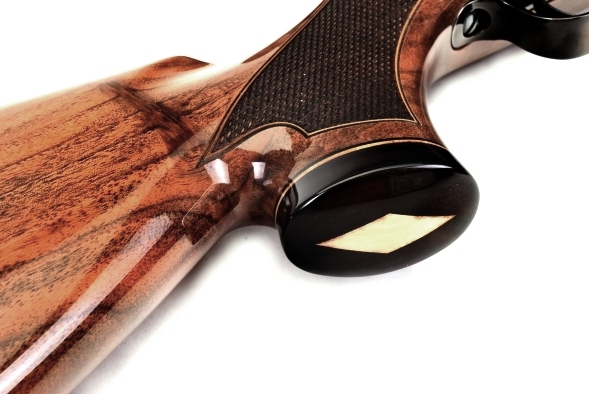 Today was a good day to conclude coverage of the big Mark V Weatherby. There was a light snow fall last night that smoothed over the accumulated drifts and erased all of the animal tacks and human foot prints. The temperature had fallen below zero, the air was crisp, clear and clean and the range was tranquil. I think there is something about rural living that people living in urban and suburban areas sometimes have a difficult time understanding. Things that you can’t find on a visit or vacation.
Today was a good day to conclude coverage of the big Mark V Weatherby. There was a light snow fall last night that smoothed over the accumulated drifts and erased all of the animal tacks and human foot prints. The temperature had fallen below zero, the air was crisp, clear and clean and the range was tranquil. I think there is something about rural living that people living in urban and suburban areas sometimes have a difficult time understanding. Things that you can’t find on a visit or vacation.
Shooting the big Weatherby from the bench and running targets down range was an opportunity to enjoy the snow rather than see it as a source of drudgery. Every time I walked into the house to warm up or grab a cup of coffee I almost expected to hear my Mom say, “Take off your boots and shake off that coat before you come into this kitchen”. Nature, privacy, peace of mind, and independence are wonderful things. You couldn’t get me to a Shot Show or a company seminar without a kidnapping. Anyway..
The modern 45-70 round has been described as a ferocious cartridge, that generates mule kicking recoil. Pictured, left, the truncated 45-70 along side the 460 Weatherby. The 45-70 is a very powerful cartridge, however, the 460 Weatherby Magnum is the world’s most powerful production .45 caliber cartridge. The 460 Weatherby easily produces more than twice the kinetic energy of the .45-70 and its energy does not dissipate quickly over short distances. With only a +3 ordinate trajectory, a 450 grain bullet from a f460 Weatherby factory load has a 260 yard point blank range, neither rising above or falling below line of sight by more than 3″, while holding 2000+ fps of terminal velocity and 4,000+ ft/lbs of kinetic energy.
For all of its power, the 460 Weatherby is easy to reload and it offers relatively long brass life. Reloading tools and equipment are no more costly than any pedestrian belted magnum or 30-06. Big 0.458″ bullets that can handle the round’s velocity are not inexpensive, but then neither is the truck load of powder it takes to fill the 460 Weatherby’s 140 grain capacity cases.
A picture is worth, in this case… about $32

There are several types of bullet construction represented within this group. Number 1 and 6 are traditional lead core – heavy jacket construction. This particular Woodleigh bullet is the magnum version of that weight and form. The Hornady has a heavy copper clad steel jacket. Numbers 2, 7 and 8 are hybrid; solid copper shank, heavy copper jacket over soft lead nose. Numbers 3, 4 and 5 are solids. The first two flat nose bullets are designed to break through bone and track straight through heavy muscle. The Barnes banded solid is solid bronze alloy, made for deep penetration without bullet expansion or distortion. All solids and solid shank bullets are heavily grooved to reduce bore friction and copper fouling.
The only issue with bullets of solid, or near solid, copper or bronze construction is their relatively low sectional density in comparison to traditional lead core bullets. This characteristic tends to make them longer at comparable lead core bullet weights and in need of tighter twists to assure stabilization. Additionally, their use can sometimes raise chamber and bore pressure as a result of higher bore friction and resistance to obturation. Some manufacturers, Barnes for one, address this issue by reducing solid bullet diameter by 0.0005″ to 0.0010″ under caliber standard.
A typical lever action 45-70 twist rate is 1:20″, CZ uses a 1:10″ rate for their 450 Rigby Safari Rifles, Weatherby goes with a 1:16″ in their 460 Weatherby Mark V rifles, which seems to provide maximum bullet stability across the board without unnecessarily adding pressure increasing bore friction.
| Bullet | Type | Weight Grains |
Length Inches |
COL Inches |
Net Capacity Grains |
| Woodleigh Mag | RNSN | 350 | 0.955 | 3.400 | 121.6 |
|---|---|---|---|---|---|
| North Fork Technologies | SPFB | 400 | 1.315 | 3.630 | 116.2 |
| North Fork Technologies | FPS | 450 | 1.370 | 3.550 | 110.6 |
| North Fork Technologies | FPS | 500 | 1.515 | 3.720 | 111.6 |
| Barnes Banded Solid | RNFB | 500 | 1.590 | 3.720 | 108.5 |
| Hornady DGX | SPFB | 500 | 1.385 | 3.700 | 116.2 |
| North Fork Technologies | SPFB | 500 | 1.525 | 3.740 | 112.0 |
| North Fork Technologies | SPFB | 550 | 1.700 | 3.740 | 104.7 |
 |
Warning: Bullet selections are specific, and loads are not valid with substitutions of different bullets of the same weight. Variations in bullet material and length will alter net case capacity, pressure and velocity results. Primer selection is specific and primer types are not interchangeable. These data represents maximum loads in our firearms and test equipment and may easily be excessive in other applications. All loads should be reduced by 3%, and developed following safe handloading practices as represented in established reloading manuals produced by component manufacturers. Presentation of these loads does not constitute a solicitation for their use, nor a recommendation.
|
||||||||||||||||||||||||||||||||||||||||||||||||||||||||||||||||||||||||||||||||||||||||||||||||||||||||||||||||||||||||||||||||||||||||||||||||||||||||||||||||||||||||||||||||||||||||||||||||||||||||
|
|||||||||||||||||||||||||||||||||||||||||||||||||||||||||||||||||||||||||||||||||||||||||||||||||||||||||||||||||||||||||||||||||||||||||||||||||||||||||||||||||||||||||||||||||||||||||||||||||||||||||
Results
Weatherby obviously put its 60+ years of experience manufacturing high performance rifles to good use when producing this combination. The Weatherby action is slick, much more so than a twin lug, non-rotating claw extractor Mauser design. Feed was positive, ejection the same and the trigger pull/feel was excellent. There was so little effort in the routine of operating Mark V, nothing broke concentration from sights, targets and the rifle’s trigger.

Left, a 3 shot 50 yard group, shot immediately after bore sighting to make sure the scope was close enough to put shots on the paper. The group is essentially two shots through one hole and one offset by 0.3″.
All groups noted on the table above were shot from a lead sled, mostly out of deference to the big rifle’s recoil and to assure the rifle’s accuracy potential was being illustrated and not my capacity to absorb recoil and muzzle blast. The Mark V was also shot away from the bench, both with and without brake the brake in place.
The Mark V weighs enough to dampen recoil and the Weatherby stock geometry and Decelerator pad make the it manageable, particularly when shooting from a standing position.
Conclusion
For someone hunting very big and very dangerous game, or perhaps protecting a client hunter’s life, this combination makes a lot of sense. The Weatherby Mark V in 460 Weatherby is all business and a practical purchase in this regard. For a collector of excellent firearms and the occasional range airing? Certainly. We are all allowed to indulge ourselves as we can with a little piece of machine art that we can be proud to own. Where many of the big double rifles chambered for $25/round express cartridges have risen to the level of the national debt, the Weatherby has remained within reach of the serious, but non-celebrity hunter. Very nice rifle.

Weatherby’s Mark V 460 Weatherby Magnum Part 1
Weatherby’s Mark V 460 Weatherby Magnum Part 2

Email Notification